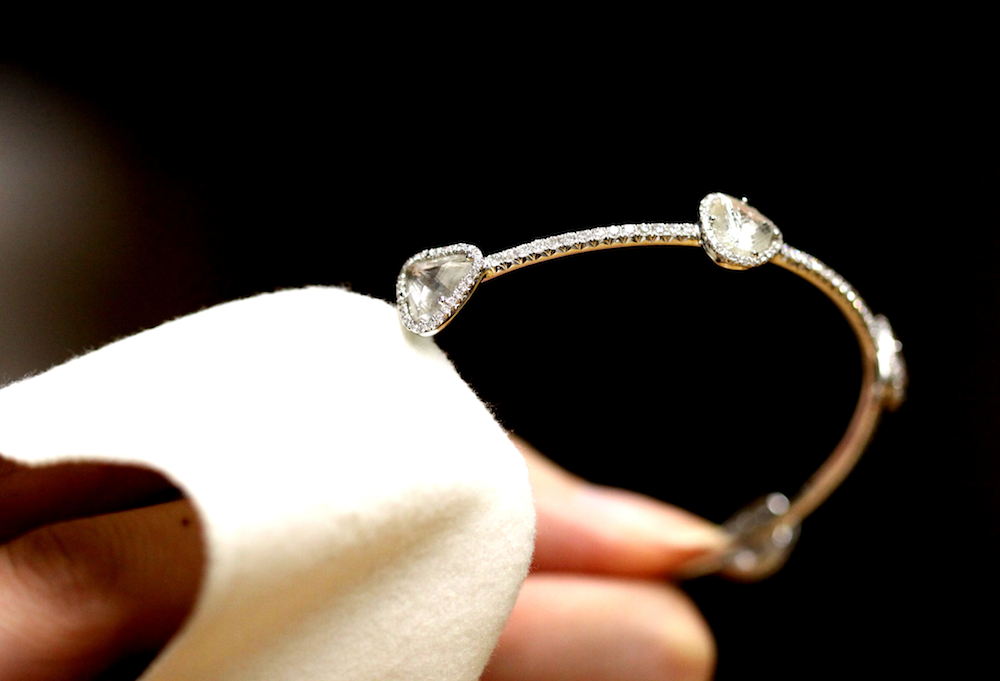The best way to clean gold jewellery is by using a solution of mild soap and water. You can also use vinegar, but you should avoid it if your piece has gems.
It is important to clean your solid gold jewellery regularly, as this will prevent debris build up. Here are some tips on how to do it:
Use a soft-bristled brush
Gold jewellery is exposed to a lot of debris every time you wear it. This includes skin oils, perspiration, perfumes and more. Keeping your jewellery clean can help preserve its beauty and extend its lifespan.
To keep your gold jewellery shiny and clean, start by cleaning the surface of the piece. Use a soft-bristled brush, like an old toothbrush, to scrub the piece gently. Pay special attention to any etching or other recessed areas of the design, as dirt can collect in these crevices more easily.
After scrubbing the jewellery, rinse it thoroughly with warm water. Next, use a soft cloth to dry it. Repeat this process regularly to keep your gold jewellery shiny and clean. If you have jewellery with gemstones, be extra careful when scrubbing or using abrasive cleaners, as they can be damaged by harsh chemicals. It’s also important to make sure that your gold jewellery is completely dry before you put it on again.
Soak it in a solution
Gold jewellery is exposed to a lot of elements that cause it to become tarnished. It’s important that you clean solid gold pieces like rings, bracelets and necklaces on a regular basis to prevent debris buildup.
You can use a solution of lukewarm water and mild dish soap to clean gold jewellery. The soaking process allows the solution to reach all of the nooks and crannies and loosen any dirt or grime that has been built up.
You can also use vinegar in a similar way to clean your gold jewellery. However, it’s best to avoid this method if your jewellery contains gemstones, as the acid from the vinegar could damage them. Instead, try using a mixture of one part white vinegar and two parts warm water to soak your jewellery for 10-15 minutes before gently scrubbing it with a soft brush. This is the safest option for most types of gold jewellery. Be sure to rinse and dry your jewellery thoroughly after cleaning it.
Wipe it with a clean cloth
Even your cheapest jewellery needs a little extra TLC sometimes. Whether it’s a flea market find or something passed down to you from a dear friend, that bauble has sentimental value and deserves to last you a long time. That’s why learning how to clean gold jewellery is so important–it will help you extend the life of your favourite bling.
Thankfully, cleaning gold jewellery is fairly straightforward: all you need are some common household items! Just fill a bowl with warm, not boiling, water and add a few drops of mild soap or dishwashing solution.
Soak your jewellery for a few minutes and scrub gently with a soft-bristled brush (you can use an old toothbrush or paintbrush). Make sure to pay special attention to any nooks or crannies. Rinse and dry thoroughly to avoid scratching or dulling the surface. Afterwards, store your jewellery properly and enjoy its newfound shine!
Dry it
Taking steps to regularly clean your gold jewellery can help keep it looking bright and new. However, it is important to remember that certain gemstones can be sensitive to at-home cleaning solutions.
For example, pearls can be easily damaged by vinegar and other acidic cleaners. Additionally, coloured gemstones such as sapphires, rubies and opals also require special care. It is recommended to visit your local jewellers on a regular basis to ensure the correct cleaning treatment for all types of gemstones and metals in your jewellery.
A warm soapy water solution is a safe and effective method to use when cleaning your gold jewellery. Combine lukewarm water with a few drops of mild dishwashing soap or liquid hand soap. Place your jewellery into the solution and allow it to soak for a few minutes before gently scrubbing it with a soft, bristled toothbrush or cloth. Rinse and dry thoroughly with a lint-free cloth to avoid any residual dirt or grime.

